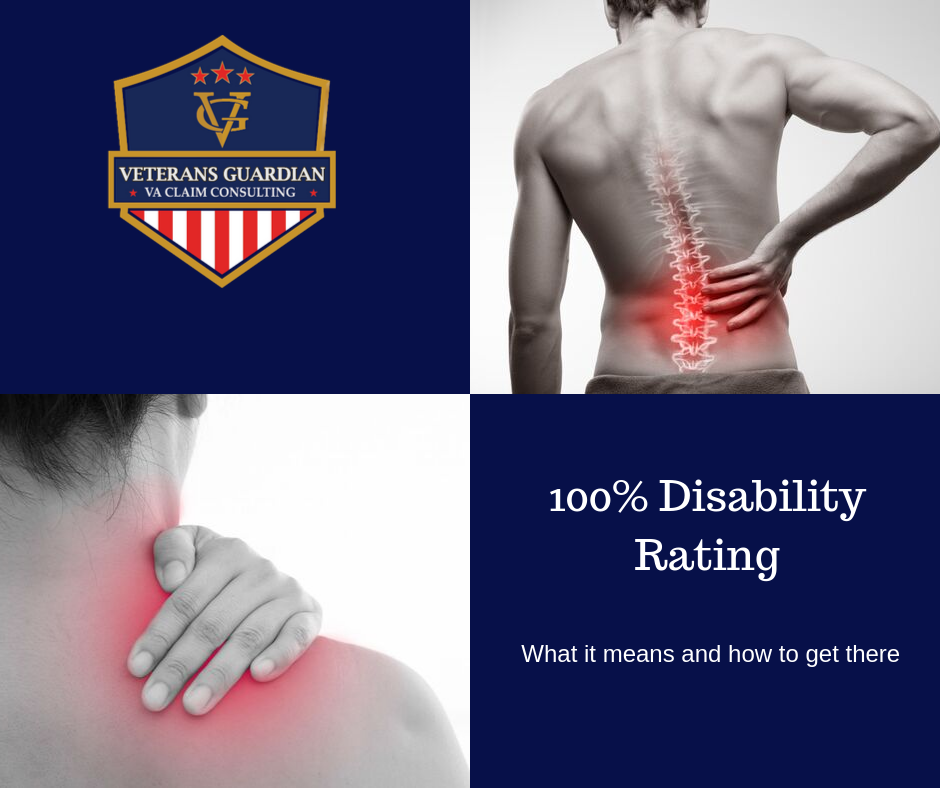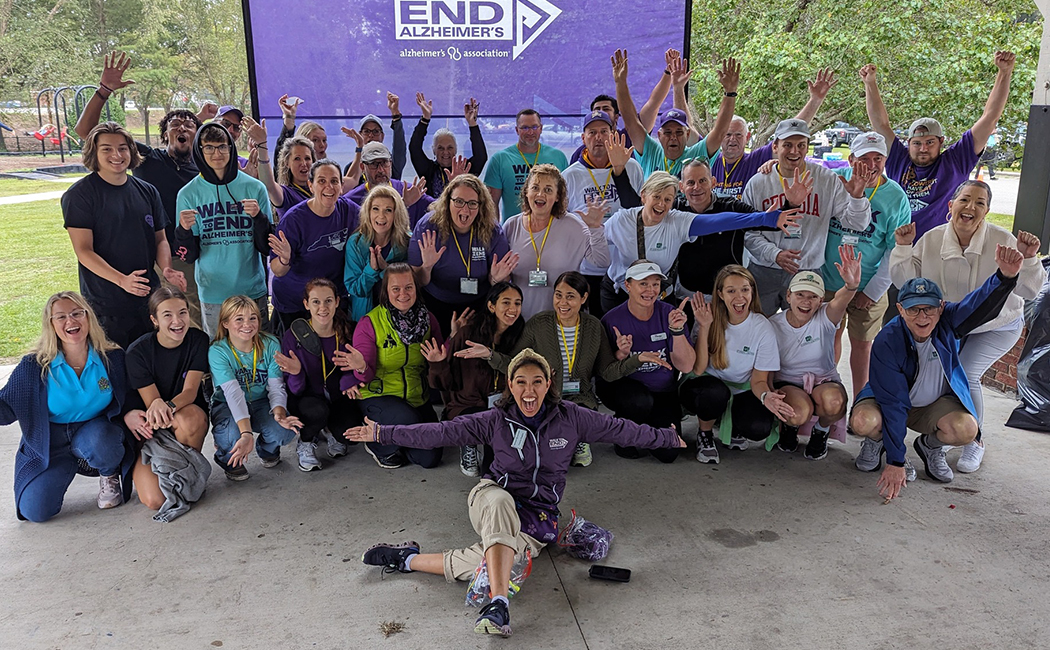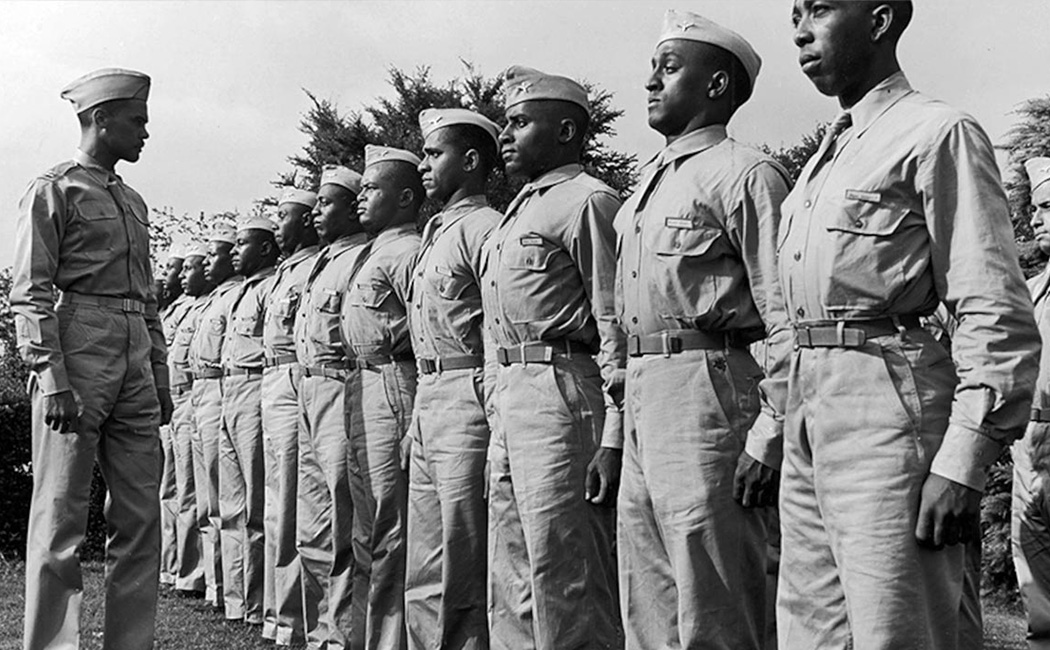Some people look at the word disabled and assume it refers to Veterans who have suffered the worst physical injuries. The truth is, a Disabled Veteran can be any Veteran who suffers from a physical or mental condition as a result of their military service. What does the phrase “100% disabled” mean in the context of VA disability claims? The VA considers a Veteran totally disabled if they have a 100% Disability Rating. Veterans can receive a 100% rating by a few different means, outlined below. Veterans awarded disability at this level receive the maximum in monthly compensation. You must provide significant evidence to prove 100% disability. Furthermore, Veterans must meet specific criteria in order to receive a 100% Disability Rating.
VA disability benefits compensate Veterans for the loss of earning capacity due to service-connected conditions. For the most part, Veterans can work while receiving VA disability benefits. However, in some scenarios a Veteran receiving Total Disability based on Individual Unemployability (TDIU) cannot work if they earn above a certain amount.
What Are VA Disability Ratings?
A VA Disability Rating is a percentage that the VA’s Rating Authorities assign a Veteran with disabilities. The Disability Rating determines the amount of VA Disability Benefits a Veteran receives for their conditions due to conditions sustained on active duty.
The VA uses disability ratings to quantify the severity of a condition. Ratings range from 0 to 100%. At a 0% rating, the VA generally believes your work limitations are minimal and thus do not warrant disability compensation. On the other end, a 100% rating signifies a condition so severe as to be totally limiting your ability to work.
A 0% rating offers no monthly monetary compensation, but it might make you eligible for other benefits, such as health care. A 100% rating provides the maximum scheduler benefit in monthly compensation. Monthly benefits increase incrementally with each higher rating.
You can check out the most recent pay rates here. Or, try our VA Disability Calculator to estimate potential benefits.
How Can I Qualify for a 100% Rating?
You can get to 100% in a few ways:
- Demonstrate a 100% Schedular Rating
- Through Total Disability Based on Individual Unemployability
- 100% Through Hospitalization
Demonstrate a 100% Schedular Rating
The VA’s Schedule for Rating Disabilities (VASRD) lists scheduler ratings. Conditions listed in the rating schedule are assigned numeric values (ratings) that correspond with the increased severity of the condition. Ratings range from 0% to 100%. For each rating for a condition, the VA outlines what criteria the Veteran must meet in order to receive that rating. VA disability ratings are supposed to compensate Veterans for the loss of earning capacity due to service-connected conditions.
The VA’s Code of Federal Regulations (CFR) provides a list of conditions and diseases that qualify for disability. Once you find your condition on the list, you will see the criteria you must meet for each disability rating in terms of your symptoms. Some conditions top out at a rating less than 100, while others do not. To receive a 100% schedular rating, you must meet the criteria for that rating listed under your condition.
Ratings on the VA rating schedule are referred to as schedular ratings. However, there are times when the VA can rate veterans outside of what is included in the rating schedule. This rating is called an extra-schedular VA disability rating.
Demonstrate Total Disability Based on Individual Unemployability (TDIU)
You can receive the monthly disability pay amount at 100%, while your total rating is actually less than 100%. However, in order to do so you must demonstrate Total Disability based on Individual Unemployability (TDIU).
In order to be eligible for TDIU you:
- Must be a Veteran
- Have at least one service-connected disability rated at 60% or higher OR have two or more service-connected disabilities with at least one rated at 40% or more with a combined rating of 70% or more
- Be unable to maintain substantial gainful employment as a result of your service-connected disabilities (for VA purposes, odd jobs are not considered substantial gainful employment)
Also, you must meet evidence requirements for TDIU:
- Evidence of at least one service-connected disability AND
- Evidence that the service-connected disability or disabilities are sufficient, without regard to other factors, to prevent performing the mental and/or physical tasks required to get or keep substantial gainful employment AND
- One disability ratable at 60% or more, OR if more than one disability exists, one disability is ratable at 40% or more with a combined rating of 70% or more.
You Have a Temporary Total Disability Due to Hospitalizations
In some cases the VA might award a temporary 100% rating due to hospitalization. To keep your 100% rating after expiration, you must show evidence that you qualify for total disability based on one or more of the other criteria above.
Obtaining A 100% Disability Rating
Are you receiving the VA Disability Benefits you are medically and ethically eligible for? The process to earn a 100% disability rating from the VA is complex, and not everyone is eligible for a 100% rating. Contact Veterans Guardian if you want assistance understanding VA Benefits.

















